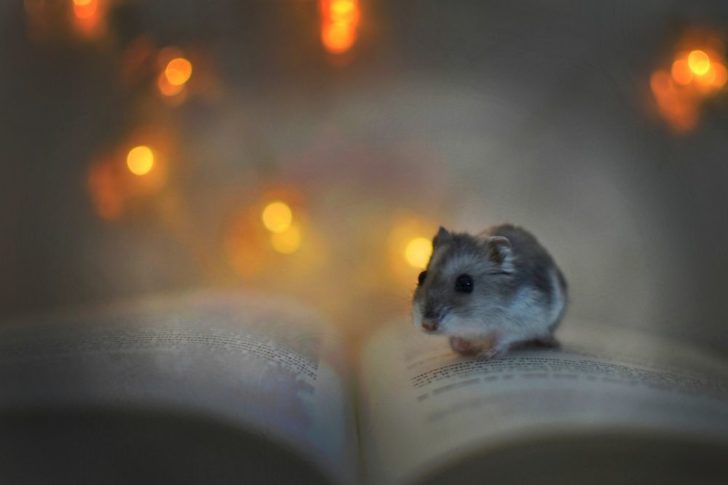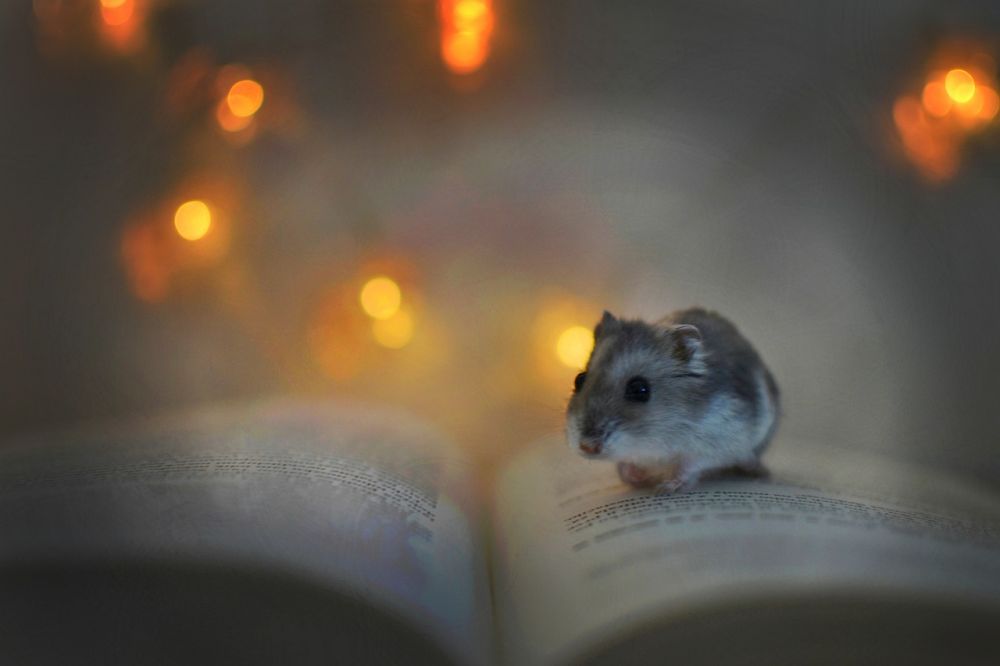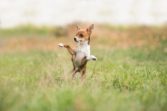Hamster Mature: An In-Depth Exploration into the World of Aging Hamsters

Introduction: A Comprehensive Overview of Hamster Mature
Hamster mature refers to the stage in a hamster’s life when it reaches adulthood and starts to show signs of aging. As hamsters age, they experience changes in their physical appearance, behavior, and overall health. In this article, we will delve into the various aspects of hamster mature, including its definition, types of aging hamsters, popular breeds, and quantitative measurements. Additionally, we will discuss the differences between various types of aging hamsters and explore the historical evolution of their pros and cons.
1. A Thorough Presentation of Hamster Mature

Hamster mature is a fascinating phase in a hamster’s life, characterized by the onset of physical and behavioral changes. It typically occurs around six to twelve months of age, depending on the breed. This is when hamsters reach adulthood and begin displaying signs of aging, such as graying fur, decreased activity levels, and reduced fertility.
1.1 Types of Aging Hamsters
There are several types of aging hamsters, each with its unique characteristics. The most common types include Syrian hamsters, dwarf hamsters, and Roborovski hamsters.
1.1.1 Syrian Hamsters
Syrian hamsters, also known as golden hamsters, are the largest and most popular hamster breed. They have a longer lifespan compared to other breeds, often living up to two to three years. As Syrian hamsters age, they may become less active, show signs of arthritis, and develop age-related health issues.
1.1.2 Dwarf Hamsters
Dwarf hamsters, such as Winter White and Campbell’s hamsters, are smaller in size and have a shorter lifespan than Syrian hamsters. They typically live for about one to two years. Aging dwarf hamsters may exhibit similar signs as Syrian hamsters, including changes in behavior and physical appearance.
1.1.3 Roborovski Hamsters
Roborovski hamsters are the smallest breed of hamsters and are known for their active and social nature. They have an average lifespan of two to three years. Despite their smaller size, aging Roborovski hamsters may experience similar aging symptoms as other breeds.
1.2 Popularity of Aging Hamsters
Hamsters, in general, are popular pets due to their small size, low maintenance requirements, and ability to provide companionship. As they age, hamsters may require additional care and attention to maintain their overall well-being. The popularity of aging hamsters as pets can be attributed to their unique characteristics and the bond they form with their owners.
2. Quantitative Measurements of Hamster Mature
Quantitative measurements play a crucial role in understanding the aging process of hamsters. By studying various metrics, such as lifespan, weight, and physical changes, researchers can gain insights into the physiological aspects of hamster mature.
2.1 Lifespan of Aging Hamsters
The lifespan of aging hamsters varies depending on the breed. Syrian hamsters generally live for two to three years, while dwarf and Roborovski hamsters have relatively shorter lifespans of one to three years. These figures can be influenced by factors such as genetics, diet, and environmental conditions.
2.2 Weight Changes
As hamsters age, they may experience changes in their weight. Older hamsters may become more prone to weight loss due to decreased appetite or age-related health issues. Regular monitoring of their weight can help detect any significant changes, indicating potential health concerns.
2.3 Physical Appearance
The physical appearance of aging hamsters often undergoes noticeable changes. One of the most prominent signs is the graying of fur, which becomes more apparent as they age. Additionally, hamsters may develop lumps or tumors, experience fur loss, or show signs of muscle wastage. Regular check-ups with a veterinarian can help identify and address these issues promptly.
3. Exploring the Differences between Aging Hamsters
While all aging hamsters share similar characteristics, there are notable differences between breeds and individuals. These differences can manifest in areas such as lifespan, physical characteristics, temperament, and predisposition to specific health issues.
3.1 Lifespan and Aging Symptoms
As mentioned earlier, Syrian hamsters generally live longer than dwarf and Roborovski hamsters. Additionally, the severity and timing of aging symptoms can vary between individuals. Some aging hamsters may display more noticeable signs of aging earlier than others, while some may age more gracefully with lesser health issues.
3.2 Physical Characteristics and Temperament
Each breed of aging hamsters has its distinct physical characteristics and temperament. Syrian hamsters are generally larger and more solitary, requiring larger enclosures and solitary living arrangements. Dwarf and Roborovski hamsters are smaller and more social, often thriving in pairs or small groups. These differences in physical traits and behavior contribute to the overall experience of caring for an aging hamster.
4. Historical Perspective: Pros and Cons of Aging Hamsters
The notion of aging hamsters and their pros and cons has evolved over time. In the past, hamsters were primarily considered short-lived pets, which discouraged some potential owners from adopting them. However, as knowledge about their care and health improved, hamsters gained popularity as ideal pets for individuals and families alike.
4.1 Pros of Aging Hamsters
– Companion and Emotional Support: Aging hamsters can provide companionship and emotional support, particularly for individuals living alone or families seeking a low-maintenance pet.
– Educational Value: Caring for aging hamsters can teach children responsibility, empathy, and the importance of providing proper animal care.
– Stress Relief: Interacting with a hamster can help alleviate stress and provide a calming effect.
4.2 Cons of Aging Hamsters
– Shorter Lifespan: Compared to other pets like cats or dogs, hamsters have relatively short lifespans. This may create a sense of loss and grief when their time to cross the rainbow bridge arrives.
– Specialized Care: As aging hamsters require additional care and attention, potential owners must be willing to provide them with an appropriate environment, regular veterinary check-ups, and tailored diets.
Conclusion:
In conclusion, hamster mature is a significant stage in a hamster’s life, marked by physical and behavioral changes. Understanding the different types of aging hamsters, their characteristics, and the quantitative measurements associated with their aging process can assist hamster owners in providing optimal care. By recognizing the variations between aging hamsters and appreciating the pros and cons, individuals can make informed decisions about adopting and caring for these delightful furry companions throughout their lifespan.
FAQ
What are the advantages and disadvantages of owning an aging hamster?
What are the different types of aging hamsters?
What is hamster mature?
Fler nyheter
Valpkurs i Uppsala – grunden för en trygg och lyhörd hund
Introduction: A Comprehensive Overview of Hamster Mature Hamster mature refers to the stage in a hamster’s life when it reaches adulthood and starts to show signs of aging. As hamsters age, they experience changes in their physical appearance, ...
02 december 2025
Hundkurser i Stockholm: Skapa genuina band med din hund
Introduction: A Comprehensive Overview of Hamster Mature Hamster mature refers to the stage in a hamster’s life when it reaches adulthood and starts to show signs of aging. As hamsters age, they experience changes in their physical appearance, ...
30 november 2025
Hunddagis i Jämtland: En trygg plats för hundar i vårt vackra landskap
Introduction: A Comprehensive Overview of Hamster Mature Hamster mature refers to the stage in a hamster’s life when it reaches adulthood and starts to show signs of aging. As hamsters age, they experience changes in their physical appearance, ...
31 oktober 2025
Hundfoder: En viktig del av din hunds hälsa
Introduction: A Comprehensive Overview of Hamster Mature Hamster mature refers to the stage in a hamster’s life when it reaches adulthood and starts to show signs of aging. As hamsters age, they experience changes in their physical appearance, ...
31 oktober 2025











